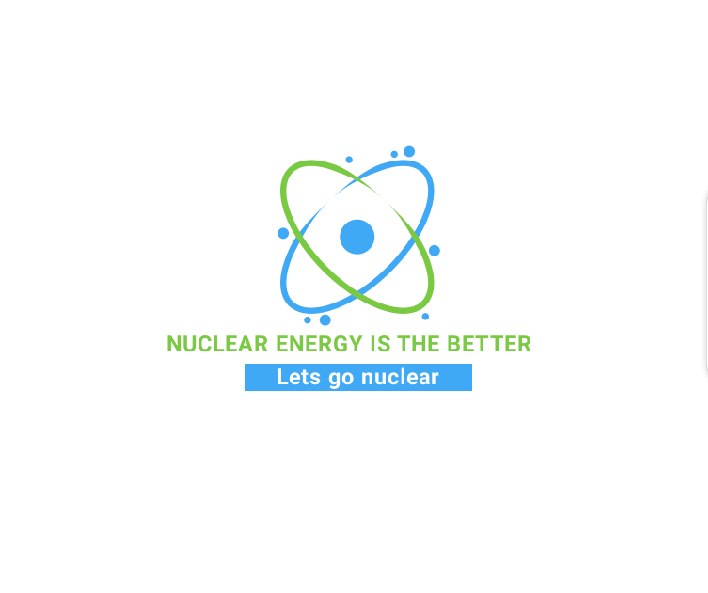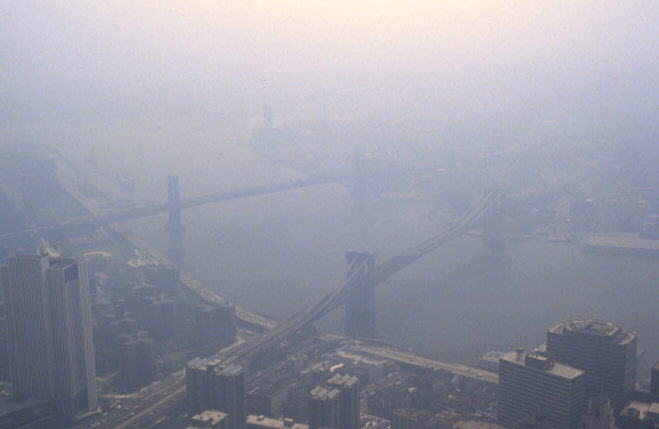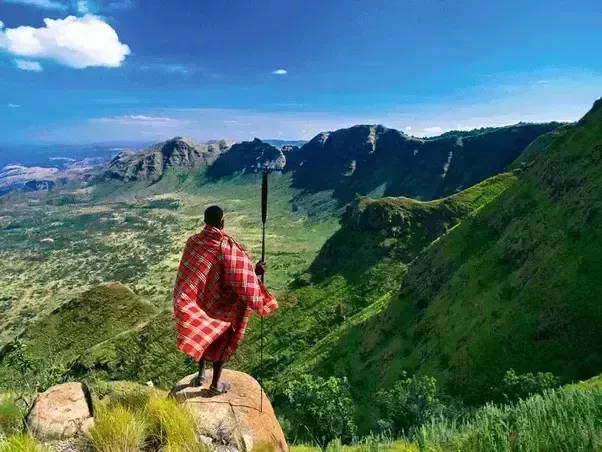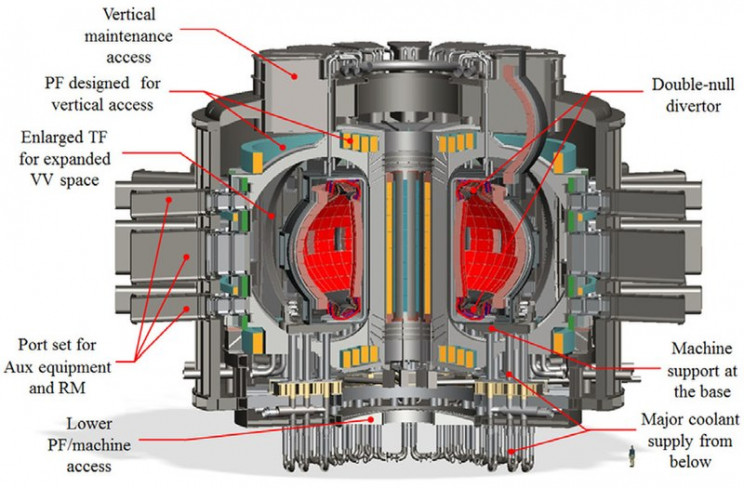Nuclear Energy is the Better

Nuclear for Kenya.
Kenya is short of the spectacle for the AMAZING nuclear energy.
For Kenya to feel the heat's power, Nuclear for GWe is the solution.

Kenya is short of the spectacle for the AMAZING nuclear energy.
For Kenya to feel the heat's power, Nuclear for GWe is the solution.

Nuclear Energy is the Better an initiative for the future of the country and nuclear.

The book is divided into models: ALPHA, BETA, GAMMA.
Module Alpha introduce students to basic concepts of nuclear energy.
Module Beta: Gives an introductory knowledge on the nuclear power plant (s).
Module Gamma: applies the present day use of nuclear and it's technologies to the world and for the future of our country.

MISSION:
To make aware the nuclear power development to
the general public in Kenya.
VISION
:
Transform the country with nuclear knowledge.
CORE VALUES:
Integrity
Accountability
Equity
Inclusiveness

Let's dive in!

NuPEA is a State Corporation established under the Energy Act 2019.
Was formally KNEB - Kenya Nuclear Electricity Board.
It is charged with the responsibility of promoting and implementing Kenya’s Nuclear Power Programme, carrying out research and development for the energy sector.
Mandates; - develop policies and legislation, undertake public education and awareness, identify suitable sites for the construction of Nuclear Power Plants; carry out research, development and innovation on energy technologies as well as capacity building for the energy sector.

The IAEA did a review on Kenya's progress status to build a nuclear power plant and concluded that the country has made good progress in nuclear infrastructure development.

Great Leader.
Nuclear Power and Energy Agency CEO Eng. Collins Juma has been feted by the Federation of African Engineering Organisations for his leadership and service to engineering in Africa. Eng. Juma is the immediate past President of the Institution of Engineers of Kenya.

" However, due to slow growth of power demand, this has been revised to 2036. Meanwhile, NuPEA’s plans and activities remain on course as shall be guided by LCPDP depending on the electricity demand."
Eng. Collins Juma

Formerly KNEB

The Twitter page for Nuclear Power and Energy Agency (NuPEA)


" Did you miss the interview aired yesterday on KBC Channel1 News #InsideGovernment about nuclear power development in Kenya? The session featured a discussion on the topic, with the CEO of the Nuclear Power and Energy Agency (NuPEA) - Eng. Collins Juma (MBS). Eng. Juma highlighted issues to do with site selection, cost, projected timeline, and other aspects in the country's agenda on nuclear power to diversify its energy generation mix. International Atomic Energy Agency (IAEA) Ministry of Energy, Kenya State House Kenya Charles Keter."

With three modules: Alpha, Beta and Gamma, I'll INTRODUCE nuclear science.
A little about the history of nuclear will land us to the concept of mass and energy.
Module Beta describes key features of nuclear power, and why you should keep it nuclear.
Module gamma highlights important aspects of sustainable nuclear that you won't miss to join!
Let's roll

1. Book the session
2. Set a date and time appropriate for you
3. Make sure to join in on time.
4. Enjoy Nuclear!

Thank you for your contribution!

For the development of the country, environmental economics has to well balance energy adoption technologies within the country, while assessing the energy needs - access, demand and it's use.
Kenya is beautiful and so is the social structures with the ministry of energy and environment, water, health, industry and mining etc - having established GOALS to achieve vision 2030 set to diversify Kenya as a competive developed country.
Amidst many challenges; population growth, poverty, water, agricultural growth, land degradation, reduction in genetic diversity etc, choosing the best energy technology (ies) counter sociopolitical demands and development.
However, most of these might not sound louder when all sectors of the economy plunge into a responsible fulfilment of the set goals, and in view of Sustainable Development Goals (SDG's) - in the case of SDG7 and this will be through working towards a nuclear Kenya.
Let's embrace nuclear energy (electricity)!

KENYA is a land with serene landscape topography, physical features, vegetation, ecosystems, aesthetics, and much more it's soils has to offer.
The wide coastal spaces near the Indian ocean waters provide good safe scenes for implanting nuclear power plant infrastructure.
Minerals Like Uranium can be mined from Coastal regions, West Pokot, Samburu, Mt. Elgon.
Making sure all is well set, nuclear expert knowledge on health impacts of uranium handling, ecology of uranium deposits, it's mineralogy, and testing is important.
"Exploratory drilling has not been done to determine the exact potential of these elements however, mining and milling can be considered in future when the economic potential of Uranium and Thorium deposits, have been determined." ~Nuclear Kenya

Kenya's drainage basins; The Lake Victoria Basin, Athi basin, The Tana basin, Ewasonyiro basin and The Rift Valley Basin, act as a background of the rich Flora and fauna.
Their quality of life is sustained amidst social, political and economic conflicts on water Resources.
Reforms on water Resources in the country are well maned by WRMA, WSREB, WAB, WST, CAAC, WRUA, Reform drivers, WSB, and the ministry of water and irrigation.

Primary activities on Industries, the transport sector, open burning of solid waste, and biomass for cooking cause air pollution.
Most of the air emissions are coming from the traffic in major cities in Kenya (Nairobi, Mombasa, Kisumu)
Kerosine and Biomass (like charcoal) have been an ambient household emissions

Kenya is a minor emitter of greenhouse gases (GHG's). Carbon dioxide (CO₂) emissions (about 87 MtCO₂ e/year) from the burning of fossil fuels for energy and cement production has impacted negatively on climate change.
There is a dire need for the economic sectors like agriculture, forestry, energy, to adjust on GHG emissions.

Aquatic and Terrestrial ecosystems in the country knit well with unique species.
"The coastal and marine environment of the Western Indian Ocean (WIO) region is a hotspot of biodiversity hosting over 2,200 species of fish, five species of marine turtles and more than thirty five marine mammal species..."
IUCN
A change in these aquatic ecosystems changes the species number and/or competition, - patterns.

Kenya has a diverse cultural base of 42 tribes and we all love to be peaceful with and another's values.
What I love about our country is, how we blend our traditions with policies, music with food, artifacts with clothes;
- how we boost each other's socioeconomic crayon on the plain papers of love, and just how we get politically tougher by the day. This is by, how we receive geopolitical or socioeconomic ideologies.

An internal audit upon the 47 counties, towns and households reveal how rich the country is.
The stronger the Kenya shilling, the more the trading bull and prosperity of the country with it's neighbors. A major challenge is corruption.
Integrating all these societies so as to have a well developed nation is by impacting the children and the youth with education and skills, making them ready for Kenya's future decisions.
Recently, there has been policies and outreach campaigns to educate more girls and women.
Girls are welcome to STEM!

With a GROWING population, it's very evident of the encroachment into the Kenyan forests, leaving behind less than 10% forest cover (~6 -7%) - which might decrease if logging is not well regulated.
Land and Water resources, energy and cultural resources; are in a dilemma of the commons thereby overused or misused.
Employing the right energy use (like renewables and nuclear energy) would save resource depletion, and in a sustainable manner.

With about 177,800 km of road network in. Kenya, the urban road networks have become a major contributor of air pollution from the dense traffic.
These roads connect producers and consumers, major Industries and their raw materials etc
.

The Kenyan landscape is BEAUTIFUL!

Nuclear energy produces radioactive waste
Spent fuel is the radioactive waste from a nuclear power plant and which holds major or dangerous effect on human health.
The major environmental concern for all kenyans - what about the radioactive waste?
Nuclear power plants (NPP) utilize Uranium as fuel for a complete nuclear REACTION which is then harnessed as heat energy to run powerful TURBINES by steam - just like all thermal plants - which in turn runs the GENERATOR to produce electricity.
When it's "energy" is exhausted, it is set aside as spent fuel (HLW) which can either be reused as (Mixed oxides) MOX or kept SAFE in set disposal sites.
Direct Exposure to these materials can cause grievous hematopoietic, gastrointestinal and neurovascular symptoms.
Its worth noting that deaths caused by exposure to radiation is much lower than those by coal. Very few people have been exposed to huge radiations of about 1mGy (milli gray); so you are safe.
Safety preparations have made it possible for people to embrace nuclear electricity.
The CLIMATE is clearly changing so does nuclear energy address this? You'll be so surprised that it is a zero carbon producer of electricity.
But amidst all its advantages over climate, the COST is clearly not for the faint hearted. It's very expensive to install and maintain a complete Nuclear power plant.
Well, let me first say that a verified nuclear power plant is SAFE. Safety concerns arise from the clove of severe accidents in history - in the former Soviet Union (1986), in the USA(1979) and in Japan (2011).
All said all done, the PROLIFERATION risk in usage of Nuclear is a concern which IAEA has handled time and again.


How does this thing work?


The world hosts 450 Nuclear Power Reactors and a billion thoughts on nuclear science, breakthroughs and facts. Here are some

North Korea's Nuclear Program. Another Front for the Biden administration.
August, 2021.
"Some time ago, I mentioned the real possibility that the lack of a fair solution to the unjustified withdrawal of the United States from the nuclear agreement with Iran (JCPOA) and the incomprehensible conditions for its return to this agreement could cause North Korea's positions related to the limitations of its nuclear program under discussion with the US to become harder than before. It seems that time is giving me the reason.
For the first time since 2018, North Korea has begun to operate its nuclear facilities to produce the nuclear fuel necessary to make atomic bombs, according to a report by the International Atomic Energy Agency (IAEA) recently released.
Undoubtedly, North Korea's actions represent a radical change after the rapprochement process with Seoul and Washington opened three years ago and underlined Pyongyang's plans to continue developing its nuclear program without having a fair approach that would allow the dialogue on denuclearization to be resumed. That dialogue is suspended since 2019.
The stalemate on the US return to the Iran nuclear agreement after its withdrawal in 2018 has convinced the North Korean government that the US is not a reliable negotiator and it is a waste of time to resume the negotiations for the denuclearization of the Korean peninsula under the present circumstance.
The IAEA report indicates that since February 2021, the North Korean government has resumed activities at the Yongbyon Nuclear Research Center, first reactivating its system for reprocessing nuclear fuel, and, starting in July, it began operations at its Magnox 5 MW(e) experimental reactor.
According to the IAEA report, these activities are deeply concerning but should not surprise anyone because they do not change the former behavior of the country neither its classification as a nuclear power. What could happen is an increase in the number of nuclear weapons in North Korea's nuclear arsenal.
It is important not to forget that North Korea is not a state party to the NPT or an IAEA member state, and for this reason, the IAEA lacks access to the nuclear facilities in the Yongbyon complex and any other facility located inside its territory, so its report is based on satellite images and other types of information that have been obtained from other sources. Because North Korea is not an NPT state party, it has the same status as India, Pakistan, and Israel.
The IAEA report indicates that the thermal plant that supplies steam to the Yongbyon radiochemical laboratory - in charge of reprocessing the fuel used in the Magnox experimental reactor to obtain plutonium for atomic bombs - has been operational from mid-February this year until the beginning of July. IAEA director general Rafael Grossi said in June that the duration of the lab's activity was consistent with the time required for a reprocessing campaign. However, he commented that it was not possible to confirm that reprocessing was taking place. IAEA inspectors were expelled from North Korea in 2009, and the agency has been forced to remotely monitor the country's nuclear facilities because North Korea is no longer an IAEA member state or NPT state party.
The fact that a reprocessing campaign has been launched probably indicates that North Korea had already produced nuclear fuel for reprocessing. However, it is not clear if that fuel was a few years old or produced recently.
According to the IAEA document mentioned above, since the beginning of July, there have been indications, including the discharge of cooling water, consistent with the operation of the experimental reactor at Yongbyon.
The IAEA report explains that activity has also persisted in the experimental light water reactor - under construction since 2009 - in Yongbyong or the Pyongsan mining complex, one of the points North Korea obtains uranium for the Magnox experimental reactor. Activities have also been reported at the so-called "Kangson complex," a compound on the outskirts of the North Korean capital believed to play a role in uranium enrichment within the North Korean nuclear program.
The IAEA considers that all these activities constitute a clear violation of the UN Security Council resolutions promulgated against Pyongyang for its development of weapons of mass destruction.
This new report comes after the North Korean government decided to interrupt communications with Seoul again this month in protest at the holding of joint military exercises between South Korea and the US in the south of the peninsula. These maneuvers that are well known irritate the North Korean government and always provoke an unpredictable reaction. These maneuvers are carried out precisely when Washington insisted again that it is willing to meet with Pyongyang "wherever and whenever" to resume the denuclearization talks without obtaining a North Korean response for the moment.
It is not easy to believe that the US administration trusts that it will achieve its objectives using the old and unflexible US policy for the denuclearization of the Korean peninsula. The US policy was and still is a wrong one and is not helping to resume the negotiations with North Korea on this subject, particularly after the current situation of the Vienna negotiations on the return of the US to the JCPOA.
If the US really wishes to achieve the denuclearization of the Korean peninsula, then it should change its negotiation approach and should not pretend to achieve everything without giving anything."

Oklo in the USA is commercializing small reactors to utilize nuclear waste for a continuous power supply!
Oklo

A letter to the European Commission "to ensure that the EU energy and climate policy accommodates all paths to climate neutrality according to the technology neutrality principle. In this context, all available and future zero and low-emission technologies have to be treated equally within all policies, including taxonomy of sustainable investments, aiming at achieving climate neutrality by 2050”.
Leaders of Czechia, France, Hungary, Poland, Romania, Slovakia


Something about fusion

Just to jog your mind, here are some of the scientists who shaped nuclear science to this day.

1879 - 1955
(76 years)
Known for: Explained the relationship
between mass and energy
(E=mc2
)
The first scientist in History to recognize that ATOMIC ENERGY could be UNLOCKED. He let it out in advocacy that this energy is to be used for peaceful purposes

1845 - 1923
78 years
Discovered ionizing radiation.

LIFE: 1897 to 1956
Known for: Artificial Radioactivity
Synthesized short lived radioisotopes by bombarding aluminum, boron, and
magnesium with alpha particles. Awarded Nobel price in Chemistry in 1935. You can
relate BNCT today because of them
This is a work in progress...